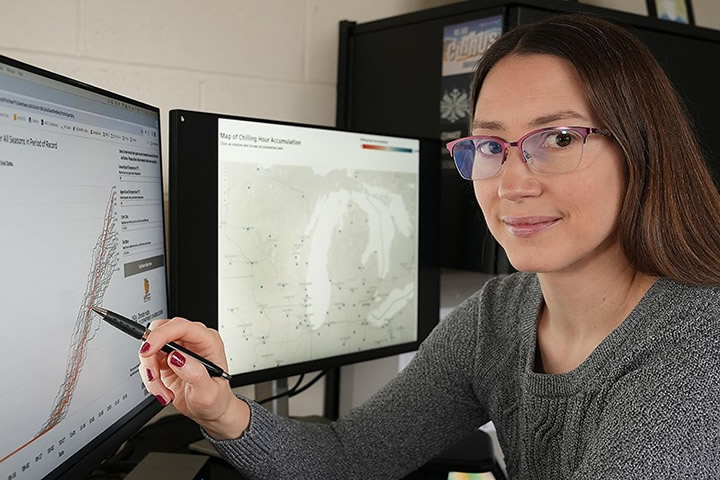New tool helps users track fruit-plant readiness for growing season
Growers now can more closely monitor accumulated chilling hours, an important factor that tracks how long fruit plants have been exposed to an ideal range of cool temperatures throughout the dormant season.
Take a Look Under The Hood of Award Winning Fruit Tech Startup Hectre
Hectre are bringing clever simplicity to the US orchard industry, delivering gains to fruit farmers. The popular NZ fruit tech company were named winners in the global AgTech BreakThrough Awards and are now double finalists in another prestigious awards program.
Ripening Fruit in Ripening Chambers - How Bananas & the Like Ripen in the Best Possible Way
Ripening of the fruit can be slowed down or accelerated by adjusting the temperature and humidity as well as by providing a targeted supply of ethylene gas and regulating the CO2 concentration.
S-5-PVKIT®2.0 & S-5-S Mini - KC Bailey Orchards Case Study
The Bailey's goal is to integrate a vertically holistic approach to fruit growing and operating their orchard utilizing sustainable materials and renewable energy sources, thereby reducing their carbon footprint and working towards their goal of running a net-zero farm.
Records 1 to 4 of 4
Featured Product

Advanced Mid-Power and High-Power LEDs for Horticulture Lighting
Cree LED's J Series® family offers a comprehensive portfolio of mid-power and high-power LEDs engineered specifically for horticulture lighting. The lineup includes high-efficacy 2835, 3030 and 5050 platforms designed to maximize photon output, energy efficiency, and long-term reliability in demanding grow environments. Photophyll™ Select options in the JB3030C and 2835 platforms deliver industry-leading efficiency with excellent sulfur resistance and footprint compatibility with 301B/H devices - making design-in seamless for horticulture luminaires. The 2835 N-Class color portfolio adds even greater flexibility with 15 high-efficacy spectral options that support precise spectrum tuning. For high-power applications, the JR5050C provides the industry's highest efficacy in its class and can reduce system costs by up to 40%. The JR5050B complements this with best-in-class efficacy in both 6V and 30V configurations. The J Series portfolio also features top-performing white LEDs. The JB3030C delivers up to 3.33 PPF/W (typical), while the JB2835B offers the highest efficacy available in a 2835 white platform. Together, these solutions give horticulture lighting manufacturers exceptional efficiency, broad spectral versatility and unmatched design flexibility.


.jpg)

